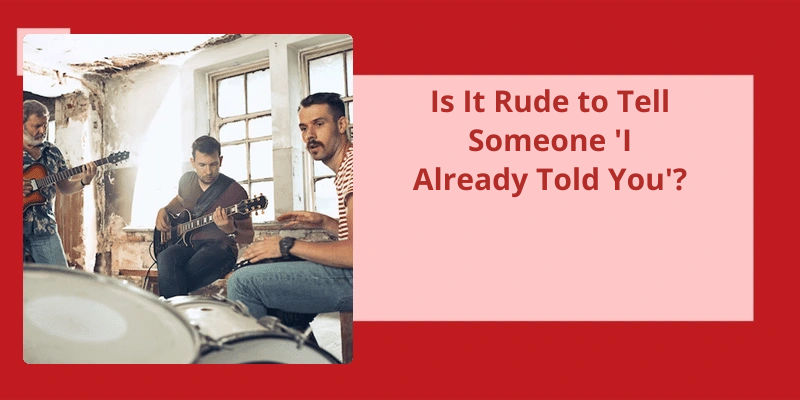Texting has become an integral part of modern communication, allowing individuals to exchange messages quickly and efficiently. However, the question arises: is texting considered verbal or non-verbal communication? The answer isn’t as straightforward as it may initially seem. On one hand, the act of texting involves individuals typing out their thoughts and utilizing written language to convey their message, indicating that it’s a form of verbal communication. Yet, simultaneously, texting encompasses various non-verbal cues that play a significant role in conveying meaning and emotions. These non-verbal aspects include response time, the length of the response, the use of emojis or punctuation, and even the subtle nuances in the choice of words. Thus, when examining texting as a mode of communication, it becomes evident that it encompasses both verbal and non-verbal elements, blurring the traditional boundaries between the two.
Is Texting Verbal or Nonverbal Communication?
Is texting verbal or nonverbal communication? The answer is: both. Verbal communication includes the use of written or spoken words, which can be found in SMS messages. This is the primary mode of communication in texting, as it involves the exchange of written messages between individuals.
On the other hand, nonverbal communication in texting is equally important. While it doesn’t involve the use of words, nonverbal cues are still present and play a significant role in conveying information. Emojis, for example, are widely used to express emotions or add context to a message. They can convey sarcasm, humor, or even clarify the tone of the message. GIFs, pictures, and videos are also nonverbal elements that can enhance communication in texting. They can provide visual cues, demonstrate actions, or simply add another layer of expression.
Misinterpretations can occur in texting due to the absence of visual and auditory cues, leading to miscommunication. Therefore, it becomes crucial to use nonverbal elements mindfully and to ensure that the intended message is clear.
Verbal communication, by definition, implies the use of spoken words to convey information. However, when it comes to the written language, there’s often a debate about whether it falls under the category of verbal communication. While written communication lacks the immediate auditory component of speech, it still utilizes words as the primary mode of conveying messages, making a case for it’s inclusion as a form of verbal communication.
Is Written Considered as Verbal Communication?
Texting can be seen as a form of written communication, as it involves the use of words to convey information. However, when discussing whether texting is verbal or non-verbal communication, it’s important to consider the distinctions between spoken and written language. Spoken communication is characterized by the use of auditory signals and immediate feedback, whereas written communication lacks these elements.
When we speak, our tone of voice, pitch, and volume convey additional meaning beyond the words themselves. These non-verbal cues aren’t present in text messages, where the meaning must be solely derived from the written words.
Additionally, spoken language allows for immediate feedback and clarification. In a conversation, we can ask for clarification if something isn’t understood, or we can respond to the other persons message in real time. In contrast, text messages don’t offer the same level of immediate and synchronous interaction. Responses can be delayed, leading to potential misunderstandings or misinterpretations.
Nevertheless, it’s worth noting that texting can also incorporate elements of non-verbal communication. Through the use of emoticons, emojis, and punctuation, individuals can convey emotions, intentions, and attitudes.
Pros and Cons of Written Communication Compared to Verbal Communication
- Pros of written communication:
- Provides a permanent record of information
- Allows for careful thought and planning
- Enables effective communication across time and distance
- Reduces miscommunication caused by accents or speech impediments
- Can be easily referenced and reviewed
- Allows for accurate dissemination of complex information
- Facilitates clear and concise communication
- Cons of written communication:
- Lacks non-verbal cues, leading to potential loss of context or tone
- May be time-consuming, especially for lengthy discussions
- Can be easily misunderstood due to lack of immediate feedback
- Limits the ability to ask questions or seek immediate clarification
- May result in information overload if not organized effectively
- Requires basic literacy skills and access to written materials
Source: Is written communication considered as verbal or non …
Verbal communication plays a vital role in our daily lives, with two major forms being written and oral communication. Written communication encompasses various mediums like letters, electronic documents, emails, text chats, and more, as long as they’re conveyed through written symbols. On the other hand, oral communication involves direct interaction through spoken words, allowing for real-time conversation and effective interpersonal connections. Let’s delve into the details of these common types of verbal communication and explore their significance in various contexts.
What Are the Most Common Types of Verbal Communication?
Some examples of verbal written communication are formal business letters, academic essays, informal personal letters, and text messages. These forms of communication involve the use of language and written symbols to convey a message or exchange information.
On the other hand, oral communication refers to the use of spoken language to convey a message or exchange information. This can include face-to-face conversations, telephone conversations, presentations, speeches, and any other form of communication that relies on speaking or listening.
While both written and oral communication are forms of verbal communication, they’ve distinct characteristics. Written communication allows for careful thought and planning, as messages can be edited and revised before being sent. It also provides a permanent record of communication that can be referenced later.
Oral communication, on the other hand, allows for immediate feedback and clarification, as it occurs in real-time. It also allows for the use of non-verbal cues such as tone of voice and body language, which can enhance understanding and convey additional meaning.
The most common types of verbal communication include written and oral communication.
Non-Verbal Communication: Discuss the Importance of Non-Verbal Cues Such as Body Language, Facial Expressions, and Gestures in Verbal Communication.
Non-verbal communication plays a crucial role in verbal communication. While texting is primarily considered a form of written communication, it also involves non-verbal cues. These cues include body language, facial expressions, and gestures. Despite the absence of vocal tones and physical presence in texting, individuals still convey meaning through the use of emojis, punctuation, and capitalization. These non-verbal cues help to convey emotions, emphasize certain words, and add context to the text. Therefore, even in a predominantly text-based conversation, non-verbal cues are essential for effective communication.
It allows for immediate feedback and clarification, making it easier to convey complex ideas and emotions. However, with the rise of digital communication, the traditional act of talking on the phone has become less frequent. In this article, we will explore the benefits and drawbacks of phone conversations, and how they compare to other forms of communication.
What Type of Communication Is Talking on the Phone?
When we talk on the phone, we’re engaging in verbal communication as we’re using spoken language to transfer information. This type of communication allows us to convey our thoughts, ideas, and emotions through the use of words, tone of voice, and other verbal cues. It’s a widely used form of communication in various contexts, such as business conversations, personal conversations, or even casual chats with friends.
During a phone call, we rely heavily on our voice and tone to convey meaning and intent. The words we choose, how we articulate them, and the way we use our voice all contribute to the overall message we’re trying to convey. For example, if we speak loudly and with an excited tone, it may indicate enthusiasm or happiness. On the other hand, a soft and monotone voice may convey boredom or disinterest. These verbal cues help the listener understand our message and interpret it correctly.
In certain situations, texting can also be considered a form of verbal communication. Although it doesn’t involve verbal speech, it relies on the use of written language to convey information. Texting allows us to exchange messages in real-time or asynchronously, making it a convenient form of communication for many. While it lacks the nuances of tone of voice and non-verbal cues, emojis, capitalization, and punctuation can be used to express emotions or add emphasis to the text.
However, the way you structure your sentences, the punctuation you use, and even the font and formatting can contribute to the nonverbal dimension of written communication. In this sense, while nonverbal and written communication may have distinct characteristics, they’re ultimately intertwined in their impact and effectiveness.
Is Nonverbal and Written the Same Thing?
However, the way you organize and structure those words, your writing style, punctuation, and grammar, also contribute to the nonverbal dimension of written communication. In this sense, written communication can be thought of as a combination of both verbal and nonverbal elements.
When it comes to texting, it can be seen as a form of written communication. However, unlike traditional written communication like letters or emails, texting is often more informal and colloquial. People tend to use abbreviations, emojis, and other forms of digital shorthand in their texts, which can add a nonverbal dimension to the communication.
For example, a simple “OK” can have different meanings depending on the tone or context in which it’s used. It could be a casual acknowledgment or an expression of annoyance. The same goes for emojis, which can convey emotions and add emphasis to the words being written.
Despite these nonverbal elements, it’s important to note that texting still primarily relies on the written word. It lacks the immediate feedback and nuances that are present in face-to-face verbal communication. Without the ability to hear tone of voice or see facial expressions and body language, it can be easier for misinterpretations to occur.
Although both forms of communication have their own unique characteristics, they aren’t entirely interchangeable. Each form has it’s strengths and limitations, and it’s important to consider these aspects when determining the most appropriate mode of communication for a given situation.
Conclusion
In conclusion, the nature of texting as a form of communication is multi-faceted. On one hand, the act of typing out words clearly falls under the realm of verbal communication, as individuals carefully choose their words to convey their intended message. Yet, the non-verbal aspects of texting are equally significant. Factors such as response time and length, as well as the use of emojis and punctuation, contribute to the overall meaning and tone of a text message. These non-verbal cues add nuance and depth to the conversation, shaping the way information is interpreted and emotions are conveyed.






